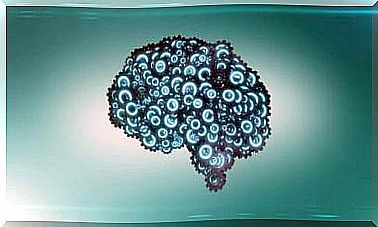Theory Of Terror Management

What is the role of death in promoting life? Although at first glance this notion may seem paradoxical, it is the basis of an approach to social psychology called Terror Management Theory (TMT).
Let’s see then what this particular psychological perspective consists of and what would be its relationship with two basic themes: the cultural vision of the world and self-esteem.
What is terror management theory?
The theory of terror management is an existential and experimental theory put forward by Jeff Greenberg, Sheldon Solomon and Tom Pyszczynski, based on the theses of the anthropologist and psychologist Ernest Becker. In 1973, he published the book The Denial of Death ( The Denial of Death ), influencing the three authors mentioned above, so that from all the work beckeriana build the TMT.
Since then, the theory of terror management began to be empirically verified based on the idea that the unconscious fear of death influences practically everything we do.

According to Becker, the evolution of the human brain progressively did not allow us to improve many of our abilities, but at the same time it generated an unexpected by-product: knowing that we are going to die. If this idea were the one that governed our mind at all times, it is very likely that fear would incapacitate us to take any action and would remain paralyzed.
Some authors think that to prevent it, we invented culture ; a place where we can be potentially immortal.
Then, all cultures would be, at least in part, resources or stratagems to manage the consciousness of death. Each culture is a symbolic construction shared by groups of people that provides a vision of order in the universe and thus endows the lives of its members with meaning.
By explaining how the universe was created, whether or not there is a creator, what the rules of good behavior are, and what will happen after death, each culture offers its members reassuring stability.
Thus, rather than describing reality as it is, culture serves a different function: it helps to manage the anxiety about death that is the highest human concern. Culture does not reveal the truth about the world, but offers calm in the face of the fact that we live in a random and indeterminate universe.
Culture – and this is Becker’s fascinating idea – would be, first and foremost, an anxiolytic that would work even before synthetic anxiolytics were invented in the 20th century.
The self-esteem
Given the above, the question that arises now is this: if culture is a human artifice to manage our fear of an inevitable death. Is it the only way? Are there other ways?
The terror management theory at this point offers a positive answer. Yes, there is another more personal resource also invented to manage death anxiety: self-esteem. In this theoretical framework, the human being would manage the fear of death using two tools: culture and self-esteem.
People not only need to feel that their life is part of a meaningful universal discourse (or worldview or worldview), but they also need to feel that they play a valuable role in that meaningful universe ; In other words, she needs to convince herself that in this work of unthinkable excess that is reality, she plays a role.
In this way, self-esteem would be a kind of “tiny worldview” or “worldview only about oneself”, the perception that oneself is a valuable part of a meaningful universe.
By making each individual feel a significant part of the world, self-esteem would acquire the power to reduce and dampen death anxiety (anxiety that in TMT is at the base of all anxieties, whether the subject is conscious or not).
In the theory of terror management, the function of self-esteem is to help manage one’s own anxiety, a self-esteem that is built from the discourses and values that our culture offers us, both in the wider society – as well as the next. -the friends, the partner or the family-.

Investigations and clinical action
Empirical research conducted in recent decades confirms that self-esteem is a buffer or regulator of anxiety. Today it is known that people with low self-esteem show greater anxiety (more pessimism and more fear of death). In addition, this deficiency is also associated with a greater impact of stress in potentially anxious situations.
For the aforementioned reasons, when the theory of terror management is put into clinical practice, the need to improve self-esteem as a platform for the patient to gain control over their anxiety is underlined.
Likewise, the psychotherapies derived from the theory of terror management will not only strengthen self-esteem, but will help it when it comes to writing kinder stories of their participation in what happens around them. The merits will stand out more, the failures less.









